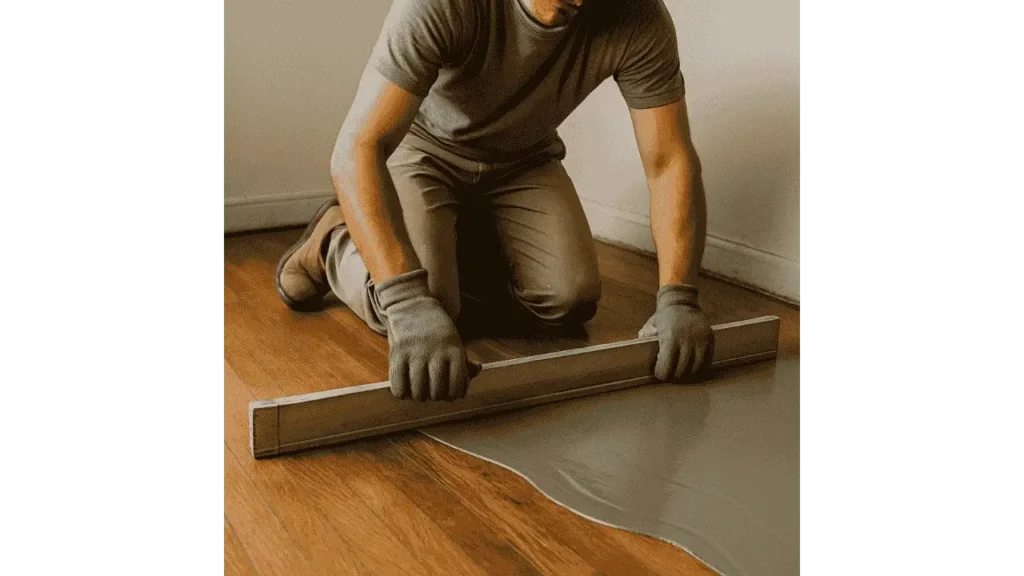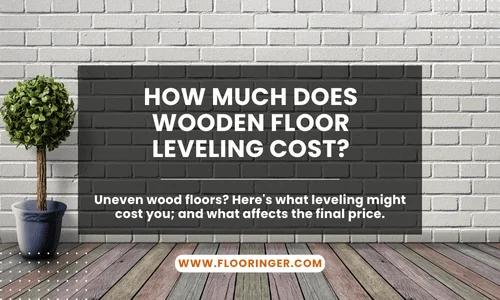Uneven wooden floors can lead to structural issues and create safety hazards in your home. Leveling a wooden floor ensures a stable surface and can enhance the look and functionality of your space. Whether you’re dealing with sloping floors, sagging joists, or simple wear and tear, correcting the unevenness can protect your investment and improve your home’s safety. However, the cost of leveling varies based on materials, labor, and the condition of the floor. This guide explains the typical costs and factors that influence the price of wooden floor leveling.

What Is Self-Leveling Concrete?
Self-leveling concrete is a cement-like compound designed to spread evenly over surfaces, creating a smooth and level base. Although it is most commonly used on concrete subfloors, it can also be applied over wooden floors with proper preparation. The process typically involves applying a primer to seal the wooden surface, followed by reinforcing mesh to improve adhesion and structural integrity. This method is ideal for fixing minor dips and creating a flat surface for new flooring installations.
Materials Used:
Material costs depend on the leveling method and the severity of the unevenness. Self-leveling compounds typically range from $1.50 to $5 per square foot, covering the compound, primer, and mesh. Plywood or OSB (Oriented Strand Board) repairs for subfloor leveling can cost between $2 and $8 per square foot depending on the wood type and thickness. In addition to the primary materials, you’ll need adhesives, nails or screws, and potentially joist hangers or support brackets for structural repairs.
Read More: How Long Should Wood Floor Sit in House Before Installing?
Labor:
Labor is a significant factor in floor leveling costs. Hiring professionals typically costs between $3 and $10 per square foot, depending on the complexity of the project and the repair method used. Minor surface-leveling jobs will cost less, while extensive repairs, such as reinforcing or replacing joists, can dramatically increase labor charges. Additionally, some contractors may charge extra for moving furniture or working in tight or hard-to-reach spaces.
Other Considerations:
Several additional factors can affect the total cost of leveling a wooden floor. If your floor has extensive water damage or rotting wood, those areas may need to be replaced, raising both material and labor costs. Homes with foundational issues or outdated structural support might require reinforcing joists or subfloors. Accessibility can also impact pricing, attics, basements, or upper floors can increase labor fees. Moving furniture or clearing the area adds to the preparation time and cost.
Time Involved:
The time required to level a wooden floor depends on the size of the area and the extent of the damage. Small, straightforward leveling jobs can take 1 to 2 days, while larger, more complex projects may extend up to a week or more. Self-leveling compounds typically dry within 24 to 48 hours, but additional drying time may be necessary if multiple layers are applied Subfloor repairs or structural reinforcements can further extend the project timeline.
Conclusion:
The average cost to level a wooden floor ranges from $3 to $15 per square foot, depending on the chosen method and the condition of the floor. Material costs, labor rates, and potential structural repairs all contribute to the final expense. Understanding these factors allows homeowners to budget effectively and make informed decisions. Hiring a professional ensures the work is done safely and correctly, resulting in a strong, even, and long-lasting floor.
